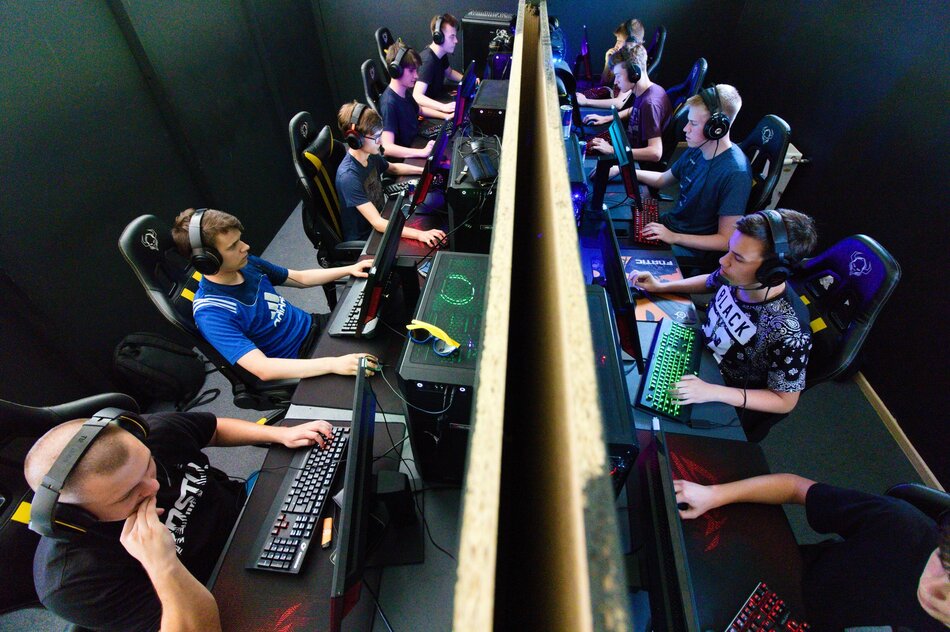Did you like that clickbait title? I’ve been practicing. This article doesn’t contain seven tips because I hate listicles. It’s just a recounting of my experience working remote for fifteen years now and observations on what works and what doesn’t, but it doesn’t matter, because the amazing title has piqued your interest.
For a bit of background, my first job was working in an office, as IT support for a construction company. I did that for three years, and then I got a remote job and never looked back. Personally, I enjoy the freedom that comes with being able to work from anywhere, and I’m lucky enough to be one of the people who can. Many of my friends have to be at their home office or a coworking space to get work done, but I can focus anywhere, which allows me to travel to another country for a week or two and work from there.
I’m not going to go into the pros and cons of remote working, I assume they’ve been beaten into you by the myriad of other posts, since it’s a trendy topic. Instead, I’ll assume you are interested in improving your existing remote culture and I’ll detail what has worked well for me.
Improving communication
From 2012 to 2019 I worked at Silent Circle, where we (rather inadvertently) created one of the best remote cultures I’ve worked in. The company had a central office, but engineering was entirely remote, which worked very well. In my experience, having some engineers be on-site and some remote never works (that’s right, I said never, I’ll never become a pundit if I equivocate). What usually tends to happen is that the on-site people communicate (and gossip) with each other much more easily, so the communication channels remote people have access to become second-tier.
My impressions for what works are based on the way things worked at Silent Circle, so that’s what I’m going to detail. If you have any feedback or if other things worked for you, please leave a comment below.
The biggest differentiators I can identify between that culture and others are three:
- IM was almost exclusively one-to-one.
- Email was used almost exclusively for any sort of decision or any discussion that required more than two people.
- We had physical desk phones that we configured to very high audio quality.
One-on-one IMs
One-on-one IMs were fantastic for socializing. We used a self-hosted Jabber server with Pidgin/Adium/whatever IM client each of us preferred. We did have some group chat rooms, but they were almost never used, in stark contrast to companies that use Slack, where most communication happens in public channels. This made socializing much easier, as it’s harder to socialize in a room where everyone can hear you, which led to everyone getting to know each other better.
When you needed something from a coworker you didn’t know well, you would usually IM them and you’d talk about the business need. Once that was done, you were much more free to talk about your personal life, chat about some topics or just be more informal and relaxed. This isn’t impossible in chat rooms, but you’re much more guarded when you know that the entire company might be watching.
Since we’d chat to each other privately in the course of work, we quickly became friends with each other and would chat to each other outside business contexts too. This made it much more likely to discover what was going on in what they were working on too. For example, my friend who worked on support would chat about the increased workload lately, I’d ask why that was and he’d say that people had problems with feature X. Usually, this was an easy fix for me, but support didn’t know enough to ask for the fix, they just thought that’s the way things were.
The increased socialization gave people opportunities to help each other, it increased how well people worked together and broke down silos. In my opinion, these behaviours improved the company’s products and kept morale higher, as well.
An important topic that might go without saying is that we all flew to the head office to meet in person once or twice a year. The on-site meet is crucial for getting to know the people you don’t normally get a chance to talk to (e.g. people you don’t usually work with). It also helps team members to bond and get to know each other at a more personal level.
Using email for discussions
Any discussion that required more than one person would take place over email, with the exception of tickets/PR discussions that happened on our bug tracker (Gitlab). The ticket communication flow was very similar to email, since the two forms are pretty similar, and I will treat them as interchangeable here.
The benefits of using email for discussions are pretty self-evident: Having the luxury of time while when expressing your opinion encourages you to think longer about what you’re saying, flesh your argument out more and come up with better arguments on a topic. Slack is roughly on par with face-to-face chats in that regard, it doesn’t really give you enough time to build your ideas. Being able to quote parts of another person’s argument when replying to them while building a larger narrative to argue your point makes discourse more fruitful.
This makes email more asynchronous as well, so team members in different timezones are still part of the discussion and don’t feel like they’ve missed a bunch of points that have scrolled past. I would routinely wake up, browse the conversations that west-coast people were having the previous night, gather up all their arguments and reply to them one by one with my observations. If this took place on Slack, it would be a bunch of disjoint points that would have scrolled past long ago, while the discussion moved on.
Desk phones
I love love love desk phones. We had Polycom phones whose hardware was excellent, the microphone was outstanding and usability was just top-notch. We did have a team of people who tuned them expertly, which helped make the sound quality the best I’ve ever heard on a phone, but there exist companies that will run and tune your PBX for a fee.
You could press a single button and immediately call anyone in the company, and the convenience of having a high-quality speakerphone was unparalleled. It was as if the person was right there in the room with you, so much so that we’d sometimes just call each other and leave the line open while we worked so we could feel like we were working next to each other. I can’t understate how popular the phones were and how beneficial an impact they had. Their main use was as a replacement for meeting face to face, and they performed admirably.
Nowadays I use Zoom, but the difference in usability is night and day. Having physical buttons for mute, calling, being able to pick up and hang up calls, and fantastic handsfree quality made all the difference. I really miss the phones every day, and I think they’re an expense that pays for itself many times over.
Defaults matter
Nothing we did on 1:1 chats is impossible to do in Slack-style group chats (or various other setups). Conversely, you can have a conference call or a chat on Zoom, but the experience is significantly worse than with a physical phone. Defaults matter, and that’s basically what culture is: A collection of defaults and slight encouragements that shape people’s behavior by gently nudging it in certain directions.
Just like slightly slower web pages lead to massive dropoffs in traffic, slight increases in ease of communication lead to massive improvements in communication quality (source). The suggestions in this article might seem like small improvements, but they add up, and they help business-related discourse as well as the equally-important socializing.
What I currently prefer
Since I left Silent Circle, I’ve mainly worked with companies that used Slack for communication, which I very much dislike. I’m using “Slack” here as a catch-all term for all software that’s similar, like HipChat, etc, not as a criticism of Slack specifically. It flies in the face of everything I mentioned above, and promotes quick, minimal-thought replies. It is possible to use Slack to socialize, and I do it too, but that’s in spite of what Slack promotes, not because of it.
I have since come across Zulip and I like it a whole lot (this post is not a plug for Zulip I swear, I just honestly find it excellent). By default, it encourages you to write long-form messages with rich text editing (for example, enter changes lines by default). Every new discussion happens in a new topic, which is very reminiscent of email, so it’s basically a cross between group chats and email.
It allows you to have long, tidy discussions that never move past the topic, allowing you to contribute later and with more thought-out replies. Additionally, I like establishing a guideline where private chats can be as quick/informal as you like, but public chats should be longer-form and higher thought (basically like composing an email). Also, Zulip’s keyboard accessibility is stellar, and you can easily navigate among discussions and topics with a few keystrokes.
Unfortunately, I haven’t found a replacement for physical phones, which I still consider indispensable. I can wholeheartedly recommend investing in good phones and a PBX service, on which I’m sure the returns will be massive.
Epilogue
This is my experience with what helps a remote culture grow. I know that many people have different views on this, and I’d be very interested in hearing about yours, if you’ve worked with a different setup that worked very well for you. I’m especially curious to hear about setups that brought you closer as a team and helped you move from “coworkers” to “friends” like IM did for us.
Please leave a comment below! Also, you can Tweet or toot at me, or email me directly.





